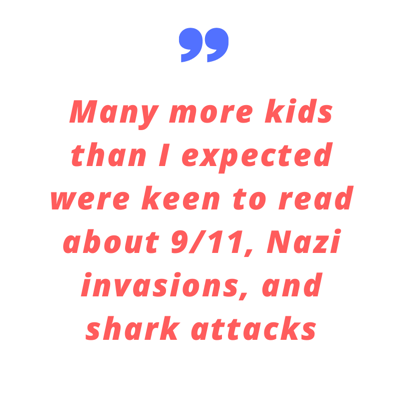By Jason Mojica
If you stopped by the storefront at 157 Huron Street in Brooklyn’s Greenpoint neighborhood on September 30th of this past year, you would be forgiven for not believing that it was going to be open for business as Hey Kids Comics! the very next day.
There were some empty shelves on the walls, a bunch of wood on the floor, and my friend Chris with his arm in a sling trying to explain to me how to use a pneumatic nailer for the first time in my life. Actually, not all of the shelves were empty: A small area toward the front was stocked with books for early readers, and these were the ones that the locksmith who had just finished working on the front door was eyeing. I put down the nailer and looked over the locksmith’s invoicel–all these little things were really starting to add up. I was burning through money so I couldn’t really afford to not open on time. I gave him my credit card, he gave me a receipt, and then pulled out $25 in cash. “If my math is right, that should cover these three,” he said, having picked up a Spider-Man My Mighty Marvel First Book, plus a couple of Spider-Man Little Golden Books. He explained that he had recently run over his neighbor’s tricycle, wanted to make it up to him, and knew the kid liked Spider-Man. I wondered why he didn’t just buy him a new tricycle, but hey–I wasn’t about to risk losing my store’s very first sale!
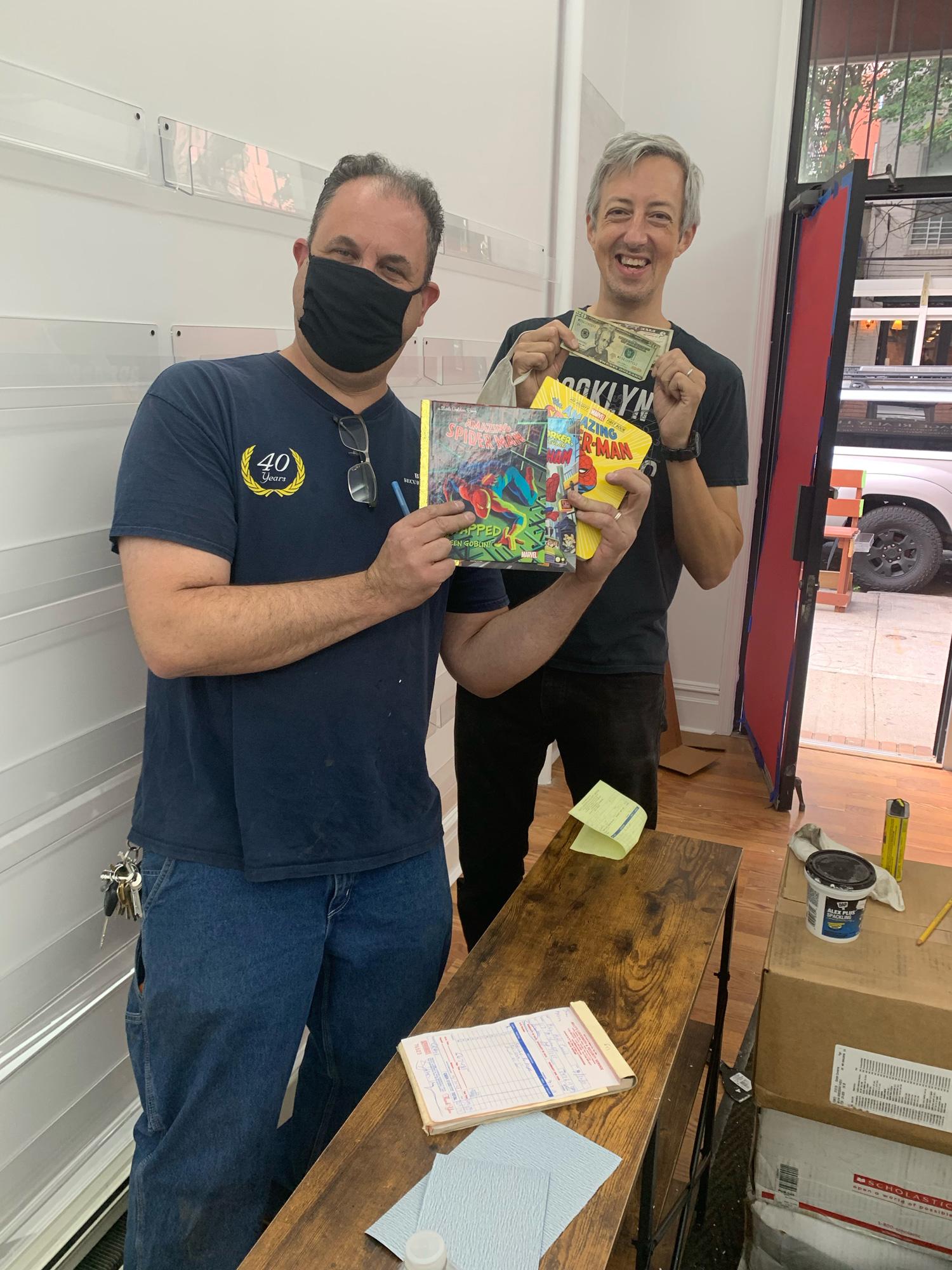
New York locksmith seeking to make amends with a child he had wronged was not a customer type I had factored for when I dreamed up the store, but that just goes to show you how difficult it is to make generalizations about who your customers will be and what they’ll want to buy before you meet them. Unfortunately, you have to make a whole bunch of bets on what you’re gonna put on your shelves, long before they walk into your shop.
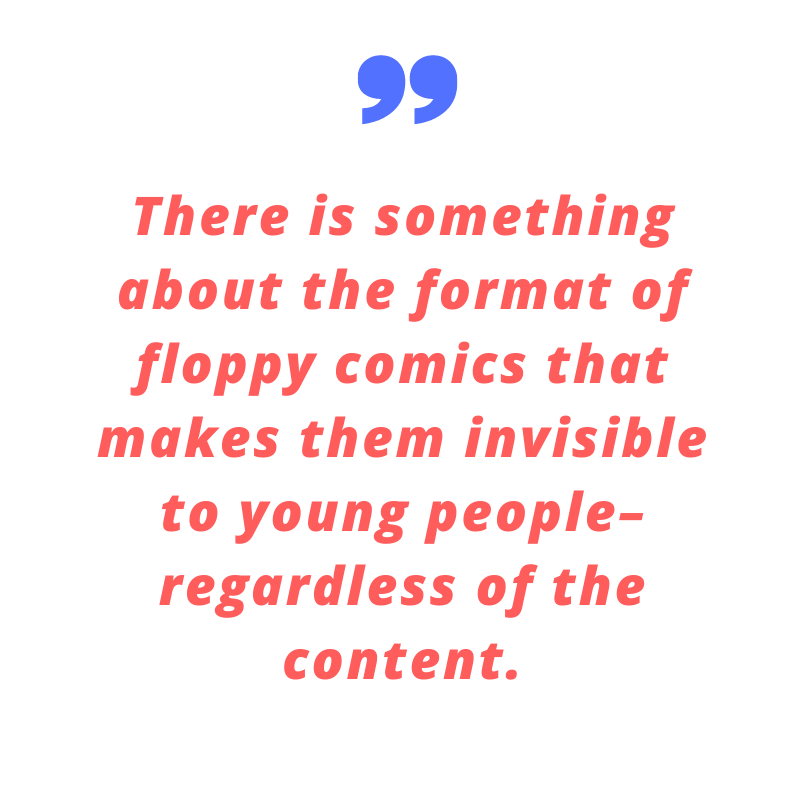
Back at the shop on the eve of our opening day, we managed to successfully and pneumatically nail a bunch of boards together into something resembling a retail counter and I was finally able to start stocking the shelves with the literal ton of books I had been amassing in my family’s apartment.
Every book I chose for the shop’s opening inventory was essentially a small wager. It’s kind of like placing chips on a roulette table while the ball is already in motion. You know that with each passing moment the ball’s orbit is degrading, and you’re running out of time for fine-tuning or second guessing. Suddenly the croupier calls out “no more bets” and all you can do is hold your breath and see how it all shakes out.
So how did it all shake out?
Considering most of opening weekend customers consisted of familiar faces–friends, family, and folks we had met while selling on the sidewalks of Greenpoint over the course of the previous year–I wasn’t sure how much I should infer from those first few days, but my initial takeaways were that a) Dog Man books sell as well as expected, b) Little Golden Books sold more quickly than I ever imagined, c) people still love seeing Jeff Smith’s Bone on the shelves, and d) there is something about the format of floppy comics that makes them invisible to young people–regardless of the content.
To this last point, I had seriously debated whether we would even carry periodical comics at all. Compared to kids graphic novels priced at $10-$13 for around 200 pages of story, spending $4 for 20 pages seems like kind of a bad deal. Plus, I was opening at the very moment that getting comics from the top three publishers required dealing with three different distributors, two of them–Diamond & Lunar–with minimums I wasn’t sure I’d be able to meet. But was I really going to open a comic shop that didn’t actually carry comic books–the kind I grew up reading? No, I was not. So I bit the bullet and decided to stock a classic spinner rack’s worth of floppies. In our first month, we sold four? Five?
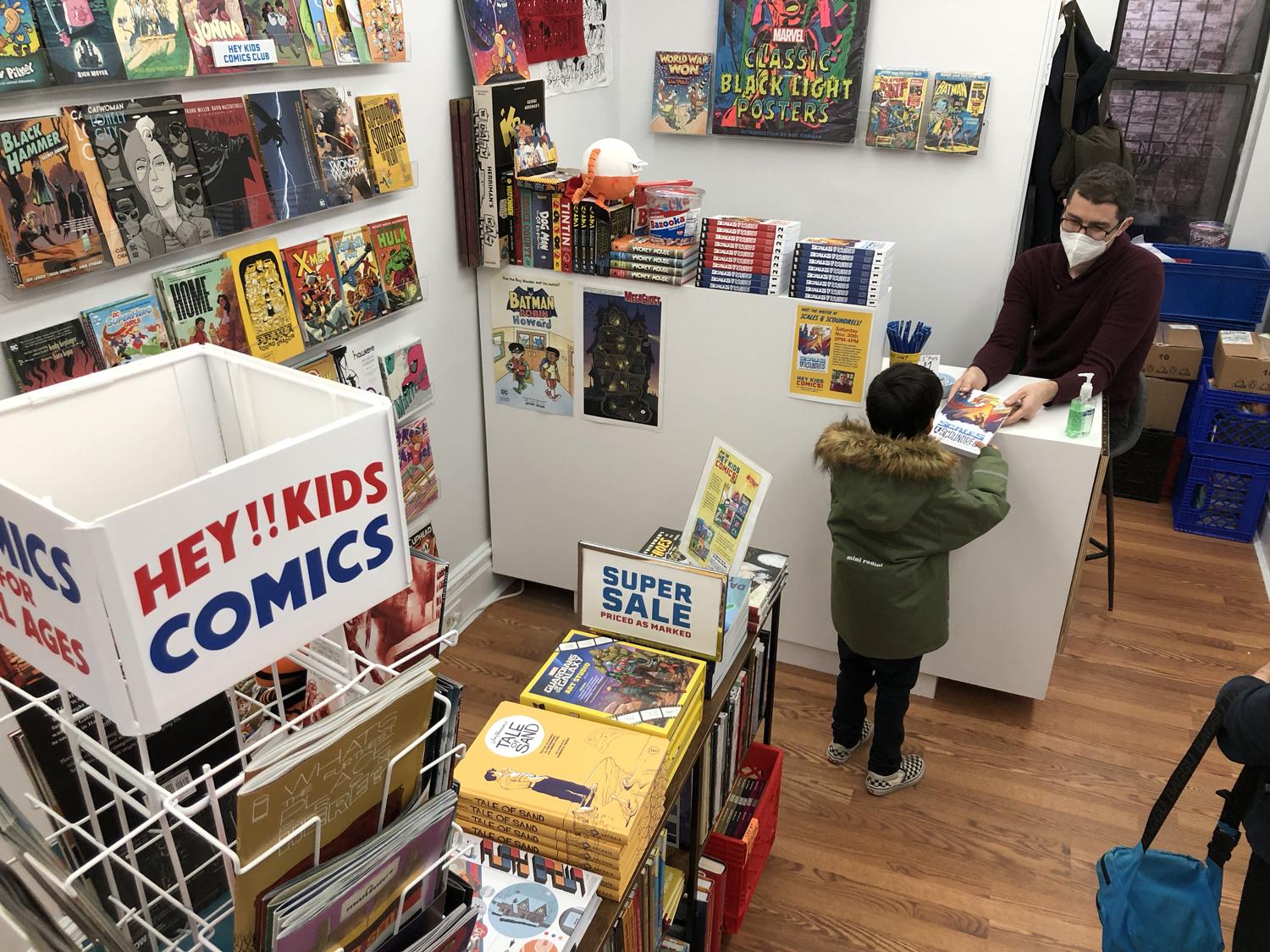
But back to the hits. The opening weekend trends did turn out to be par for the course, but the sales became a bit less concentrated as time went on. We opened with roughly 300 titles, and in our first quarter there were only a handful of titles that didn’t sell at least one copy. But the majority of our sales came from just 50 books / book series. In a few of those cases, the high sales were tied to author events (marked with an asterisk), but I also found those books had a momentum of their own and kept on selling long after the event.
The 50 titles / series that drove more than 50% of our sales in our first quarter:
Dog Man
Spider-Ham: Great Power, No Responsibility*
Manu*
Megaghost*
Cat Kid Comic Club
Scales & Scoundrels*
The Amazing Cynicalman (mini-comics)
Shonen Jump (vintage copies in English from 2003-2007)
Minecraft
Barb: The Last Berzerker
Peter Porker: The Spectacular Spider-Ham (Little Golden Book)
Mad magazine (vintage)
The Complete Peanuts
Pokémon Horizon: Sun & Moon
How to Draw Comics the Marvel Way
Amazing Spider-Man (Little Golden Book)
Black Panther (Little Golden Book)
Spongebob Comics
Paper Girls V1
Jonna and the Unpossible Monsters
Batman and Robin and Howard
Bone
My Hero Academia
Cleopatra in Space
Djeliya
Young Shadow Stig & Tilde
Miles Morales: Spider-Man (Little Golden Book)
Pokemon – How to Draw Deluxe Edition
Pokemon – Super Deluxe Essential Handbook
Owly
Animal Crossing: New Horizons
Wings of Fire
Shark King
The Fly
Jim Henson’s A Tale of Sand
Invincible Iron Man (Little Golden Book)
Superman (Little Golden Book)
Teen Titans Go! – Roll with it
Ms. Marvel: Stretched Thin
Kirby Manga Mania
Jack and the Box
I Survived
Hilda
Ham Helsing
Factory Summers
Spidey and His Amazing Friends (Little Golden Book)
Banana Fox
Black Hammer
Amulet
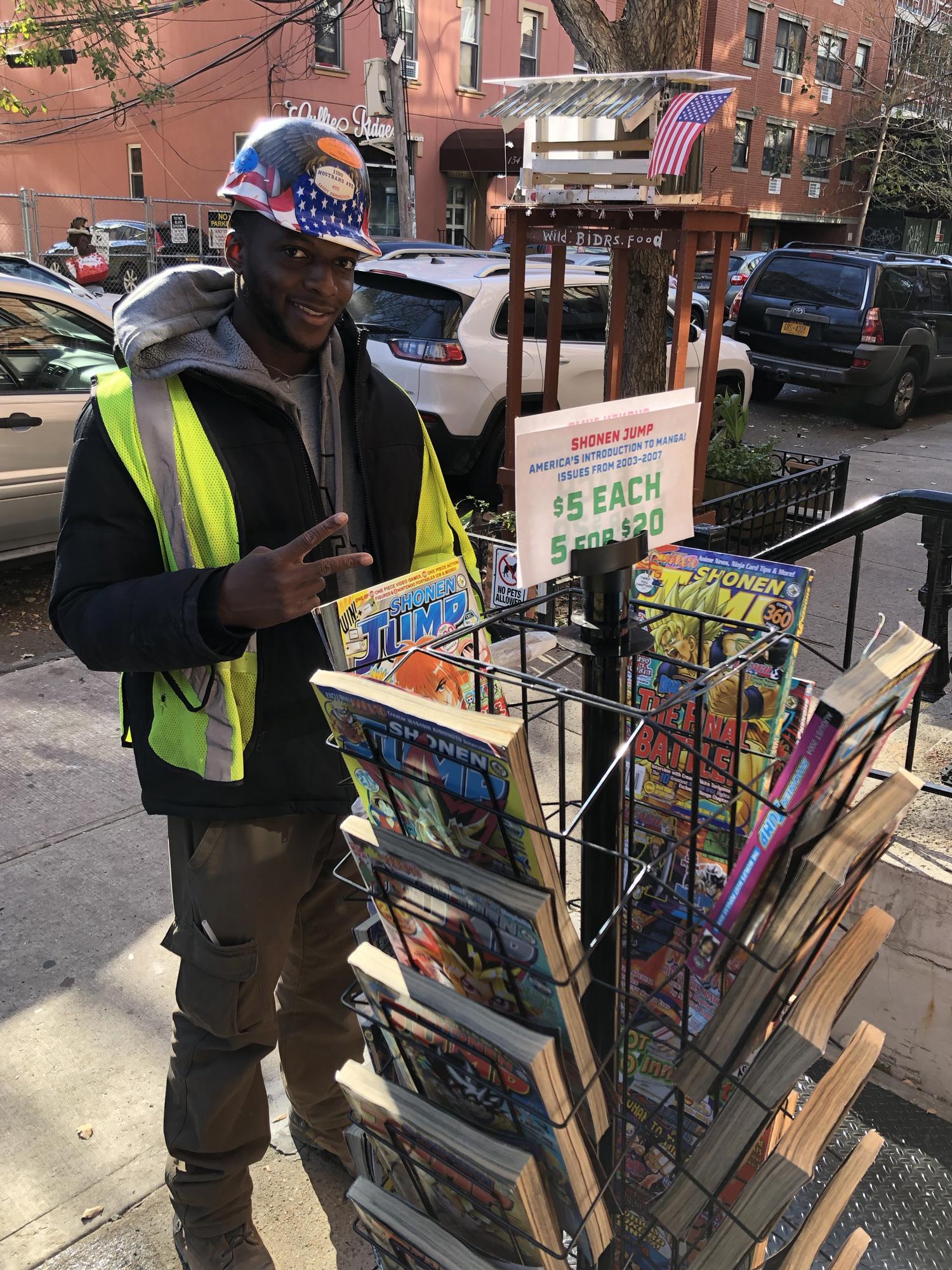
The surprises in that list for me were Little Golden Books (and that it was heavily weighted toward Marvel characters), How to Draw Comics the Marvel Way (kids and grownups alike really respond to that classic cover), My Hero Academia (I didn’t grow up reading manga so I was caught off guard at how many teens & adults came in looking for this in particular & manga in general–in spite of the fact that I’ve heard it discussed often on the More to Come podcast), Teen Titans Go! (this and other books in the manga-sized DC Graphic Novels for kids format series do well even while other DC stuff does not), I Survived (many more kids than I expected were keen to read about 9/11, Nazi invasions, and shark attacks).
You know what else does well? Anything a kid’s parent doesn’t seem to want them to have. Those are my favorite interactions to watch, because they tend to originate with a kid having a visceral response to a book’s art–it happens in a flash. Something grabs hold of them and they want to spend more time with it–in spite of the fact that it might be above their reading level, or contain subject matter their parents know are going to keep them from sleeping later that night. Parents understandably resist, and the kid’s desire increases exponentially.
The flip side of that, naturally, is that anything a parent actively encourages a kid to check out is often rejected out of hand, and that brings to the topic of which of my oh socarefully-curated selections have failed to resonate with the masses. I don’t want to give any of the talented folks involved with these very good books a complex, so I’ll speak a bit more generally about these, but there is an observable pattern:
•Award-winning books aimed at kids that deal with big important issues: It’s not that they’re not good, it’s just that when a kid has a choice of one or two books, these are not going to make the cut.
•Kinda-cute fantasy: Fantasy is our biggest category at the store, quantity-wise. There’s so much stuff in this category that one-off kinda-cute fantasy GNs face a lot of competition from other kinda-cute fantasy GNs.
•Manga with no street-cred: There are a lot of great manga series out there, and I’ve attempted to make available some newly-launched series that have snappy titles and great premises–but no dice. If it’s not one of the top ten most famous manga titles, it just doesn’t move.
•Superheroes: This is something I noticed from our earliest days selling on the street–young people just don’t gravitate toward superheroes. Doesn’t matter if it’s Marvel, DC, or otherwise. There are exceptions of course, but I get the impression that they’re the result of a parent who’s a fan nudging their kids toward their own childhood favorites. A notable exception to this is Spider-Man. As though he’s part of our collective unconscious, Spider-Man does seem to cut through, but the enthusiasm doesn’t seem to carry over into other characters in the Marvel Universe.
•Stuff that I got because I thought it was awesome: A $200 book of Krazy Kat Sundays is pretty awesome, but the person who’s likely to buy it has yet to walk through the door. I had fun tracking down Dav Pilkey’s out-of-print first book, World War Won, but haven’t found someone to fork over a hundred bucks for it.
And you know what? That’s fine. I want the store to have character, not to be an algorithm. That means that some books are there as a matter of principle–because I believe in them. Let’s remind ourselves that we are literally talking about art here–and some works of art are just not going to resonate with the masses. But once in a while someone will walk in and you see them gravitate to that book that you’ve been wishing would get some attention, and it’s one of the best feelings in the world.
Some bets you just have to let ride.




